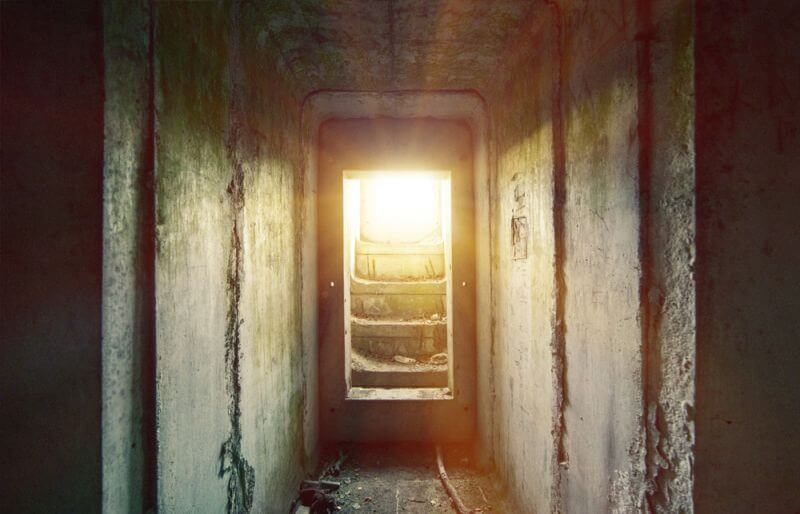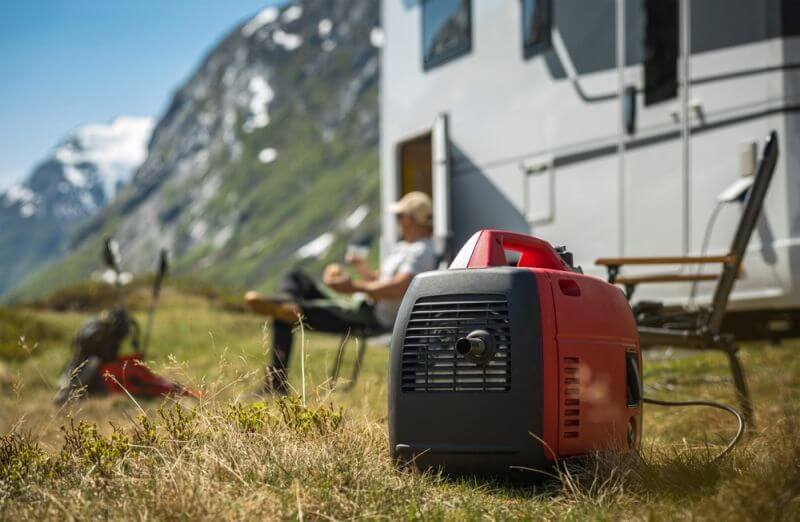Cooking
Cooking without electricity or other public utilities doesn’t have to be difficult. If you are using a wood stove for heating (as described in Part 2), the hot surface of the wood stove provides an excellent platform for cooking most meals. Standard pots and pans can be placed on top of the stove and heat up as efficiently as a standard stove top.
In addition to the wood stove, many cooking duties can be performed by a solar oven. A simple solar oven can be constructed in under an hour from readily available materials. A cardboard box, some black paint, aluminum foil, and a old pane of glass are all that’s required to make an efficient, sustainable cooking solution.
Solar ovens are an excellent survival option because they do not require maintenance, have no moving parts, and it is nearly impossible to burn food cooking in this manner. On a sunny day, the internal temperature of a solar oven can easily reach temperatures of 200 degrees; plenty of heat to cook any meal without burning.
A solar oven does require significantly more cooking time than a conventional oven so it is advisable to put a meal in the oven in the morning and expect to have it ready in time for dinner.
Protecting Your Electronic Devices
Although it isn’t practical to protect most of the electronics in your home there is certainly value in protecting some things from permanent damage. TVs, personal computers, and MP3 players won’t do you much good in a post-apocalyptic world. Shortwave radios, weather radios, flashlights, and power generation equipment could become very helpful following an EMP (Electromagnetic Pulse) and should be protected whenever possible.
There is a method designed to protect electronics from strong electromagnetic pulses known as a Faraday cage. Named after a scientist who discovered the designs ability to shield equipment from electromagnetic waves, a Faraday cage is a versatile tool that can be constructed very easily in any size depending on your needs.
Contrary to the name, a Faraday cage doesn’t have to be a cage at all. Commercially available units are commonly made in a cage configuration using copper mesh and solid aluminum but a simple Faraday cage can be made using aluminum foil and a steel trash can.
When constructing your own Faraday cage, you have to consider how many devices you are trying to protect. This dictates the size of the unit you are creating. A steel trash works well for a few household items but it is hardly big enough to fit a portable generator or other electrical device that you may need following an EMP attack.
Maybe you decide that you want to ensure the functionality of your vehicle. This requires a large Faraday cage. Many preppers have successfully been able to convert their garage into a large, walk-in Faraday shielding device capable of protecting a vehicle and many other household items that could be useful in a survival situation.
This can be done by constructing a cage of fine mesh caging inside the entire garage. The mesh has to protect the entire area including any doorways in order to be effective but just imagine how many electronic devices you could protect in a standard size garage with built-in Faraday shielding.
For those with more modest shielding goals, the steel trashcan makes for an excellent solution. The key to protecting electronics from an EMP is multiple layers of shielding. The more insulation from the electromagnetic pulse, the more likely it is that your electronics will remain functional after an event occurs.
The first step in constructing the trashcan cage is to assemble your electronic devices and put them into non-conductive packaging. This could be small cardboard boxes, shipping envelopes, or similar. You can fit multiple small items into a single container or separate them into individual packages.
Once they are securely packaged, wrap each box in at least two to three layers of heavy-duty aluminum foil. This is the first layer of protection against an EMP attack. Unfortunately, this layer of conductive material is not enough.
This is where the trashcan comes into the equation. The steel trash can acts as a second layer of protection. For this to work, the aluminum foil wrapped containers cannot touch the metal of the trashcan at all. If it does the cage will often work more like an antenna and amplify the EMP waves.
An easy way to ensure they do not contact the trashcan is to line the inside of the trash can with thick cardboard. The bottom, sides, and even the lid of the trashcan should be completely covered in cardboard so there is no risk of metal-to-metal contact.
Items can now be stored in the trashcan and should be impervious to most EMP attacks. Since an EMP can occur with little or no notice, it is best to have a supply of extra electronic devices that can be permanently stored in the Faraday cage until after an EMP has occurred. Place the items in the trashcan, make sure the lid is securely fastened, and place it in a safe location until the day when they are required arrives.
As previously mentioned, larger cages can easily be made depending on your needs. Maybe you have a portable generator that you plan on using for survival. Solar panels, wind turbines, and other large survival-related electronics require a much larger enclosure.
Instead of using a trash can, consider converting your garage or a small storage shed into a Faraday cage by using fine mesh fencing and surrounding the inside of the enclosure. This includes the floors, roof, and all four sides. If there is an opening in the mesh, the pulse will find its way through and damage your electronic devices.
Although a Faraday cage is not a guarantee, it is the single best method to shield your electrical and electronic devices from an EMP. Waiting until an EMP is imminent is not the time to start experimenting with various designs.
Constructing adequate protection is merely a weekend project and greatly increases your chances of survival. Combined with other techniques for living after an EMP, you are well-equipped to forge a new life in a world most similar to that of your 19thcentury ancestors
This article has been written by Bryan Wilde for Survivopedia.
©Survivopedia.com
| This article is sponsored by EMP-Survival.com – To find out more about how to protect your family from an EMP…. and how to thrive when all lights are out for months in a row, click here. |









Pingback:Surviving an EMP Attack: Part Two | SurvivoPedia | July 24, 2013
|
Mitchel | July 24, 2013
|
I may be mistaken, but from my studies on electromagnetism, aluminum foil or shielding will not in any way serve as a Faraday cage. When a magnet is placed against aluminum on one side and a piece of steel on the other, the steel can be moved simply by moving the magnet, proving that magnetic waves travel through aluminum.
I believe the “cage” must be steel. Electromagnetic waves “flow” similarly to water in a stream. The “cage” serves as a boulder or other obstruction within the stream and the electromagnetic waves flow around the obstruction but magnetize the entire cage at the same time, thus the need for “insulation”.
I don’t know this for a fact, but I would like for someone with more knowledge to clarify this point. I would surely hate for a lot of folks to count on aluminum to do the job if it will not.
Thanks. Hope this is a benefit to someone.
Mitchel
Great Grey | July 28, 2013
|
Mitchel the same applies to copper and brass. What make it a good material is the fact it is nonmagnetic. It reacts stronger to magnetic waves than iron, and will reduce the strength more but, that doesn’t mean iron doesn’t have place as one of layers of protection.
Sean mahoney | July 24, 2013
|
I would think that grounding the cage helps. Anybody?
admin | July 24, 2013
|
Here is a video that explains how to make a Faraday Cage
Jack | July 24, 2013
|
Magnetic fields and electromagnetic fields are not the same thing, but are similar. Faraday cages cannot block static or slowly varying magnetic fields, such as the Earth’s magnetic field (a compass will still work inside).
For a Faraday cage to work, it must be grounded. Aluminum will shield from EMPs to a certain extent IF it is grounded. However, placing an ungrounded aluminum wrapped box inside a steel trashcan and not attaching it to the trashcan, keeps it from being able to be grounded, essentially creating a transformer, sending and EMF through the contents of the box, strongest near the outer edge of the box, weakest at the center of the box.
The aluminum foil covered box needs to be “grounded” to the steel trash can, and the steel trash can needs to be earth-grounded to have any hope of this system working.
The point of the Faraday shield is to catch and conduct the EMF to ground, not just surround the internal area with a conductor which will itself radiate a secondary EMF.
Also, in part two, it somehow escaped the author’s note that even older cars are “killed” by strong EMPs. The problem is the battery, the spark plug wires, the spark plugs, the distributor cap, all the internal car wiring, and the generator or alternator (both of which are essentially electric motors/transformers). Depending upon the strength of the EMP, anything capable of carrying an electric current could be melted or burned-out.
However, the generator or alternator and the battery are the biggest problems and there is no way any car will start if the generator/alternator has been destroyed.
Kent Beebe | July 24, 2013
|
Out of curiosity, could an aluminum pole barn be used as a faraday cage if the walls are well grounded and the contents are back away from the walls on rubber mats?
hbp112358 | August 18, 2013
|
only if you have the floor meshed as well. what makes the Faraday cage work is the fact that it is a full cage, an open floor will make it so that you no longer take advantage of the fact that electricity only flows on the outside of a conductor. open the floor and the entire thing becomes pointless.
http://en.wikipedia.org/wiki/Faraday_cage
Example.
Mark | July 24, 2013
|
Do batteries (AA, AAA, C, D, 9V, etc..) need to be placed in the cage?
Xiccarph | July 24, 2013
|
Lots of technical data missing here. Faraday cages vary in design based on what you want to be shielded from. Secure buildings are sometimes integrated with mesh (including doors/windows) designed to block certain frequencies from getting in/out. This would be used to prevent people from using cell phones or other wireless devices to call in/out of the secure area. For complete protection, the mesh (solid metal is best, but not always practical) should be of a highly conductive material (i. e. copper), thick and well grounded (multiple grounding points). Its hole spacing would be small…like a window screen (< 1mm). Want the best "Faraday cage"? A nice concrete/steel bunker, the ceiling of which is at least a few yards underground. For "reliable" above ground EMP Faraday cage specifications, do some research first!
Frederick Gardner | July 25, 2013
|
I think a PC could be very useful in this “post-apocalyptic” world. The software tools can be useful. A large amount of information stored on an external drive (eBooks) can not only provide for you and your new community, but it can be a trade commodity if others need information and they have something useful to trade to you – such as food or fuel. The ‘grid” and all the services it supports (including schools) may not return for a long time. If the disruption is widespread I can imagine small survival communities setting up. A small community with this resource can provide information and training services in trade with surrounding communities. Yes, of course, you also need to provide for an electrical source that was protected from EMP – something you might be doing anyway.
hERBERT gIDDENS | July 25, 2013
|
Hey Guys, For serious shielding concerns please google Mu Metal and do a little reading. In the old days it was used shielding electronic packages sent into space.
For attenuating noise on wires use ferrite beads or mini doughnut toroides.
Yes copper screen works for shielding rooms. Install it into the walls and ceiling prior to nailing on the sheetrock. Should one need to install a phone line or power line through the wall use a sharp pointed tool to make the hole. When using shielded twisted pair only ground one end. On the opposite end, cut the shield back a few inches and tape.
Run signal lines 90 degrees to electrical line. Separate lines as much as possible – do not bundle. Use tight fiting lids on metal cans.
Arkansas Cooke | July 25, 2013
|
The way I tested my Faraday cage is to put my cell phone in it. Then call it from another phone. If it does not ring, the radio waves can not get through and an EMP should not be able to get through.
Jack | July 25, 2013
|
Nice thought, but not really applicable. Cell phone transmissions are extremely low power. When an EMF hits a conductor, such as a Faraday cage, the current through the cage generates its own EMF inside the cage. That is the reason for a second cage inside the first, hopefully damping the original EMF down to a much smaller EMF, and a weak one inside the second cage.
freddie | August 1, 2013
|
Basically nice blog site. It was very beneficial for me. Retain sharing these kinds of ideas down the road as well. It was actually what I was looking for, using this program . glad to came right here! Thanks for revealing the similarly info with us
Rusty | September 1, 2013
|
All of you are describing a capacitor , two conductors separated by a dialectic, allows current to pass through by activating corresponding electrons across the barrier by electromotive force. In essence the current / magnetic field, while meeting with the opposite polarization effect will simply become one huge capacitor. The reports I have read states that during the 1859 EMP event that the copper wires melted and fell from the telegraph poles, starting multiple fires. Now surround your garrage with a huge fuse. Not to mention the fact that your whole house is laced with the same copper wires that we know melted and started fires in 1859. Now your house is burning, there is no FD their trucks won’t start, besides the fire station is also of fire.
Transportation, are you nuts, imagine thousands of vehicles traveling at break neck speeds suddenly losing all power, no power steering no power brakes. The streets are going to be one huge killing field. You ain’t goin no where boy. Planes, jets, helicopters falling out of the sky, power lines melting and falling from the poles all across the land and Forrest’s. imagine if you will the utter destruction, our enimies don’t care wheather or not our cell phones are knocked out, the are going for greater widespread destruction of epic and lasting proportion.
That’s on the small scale, forget the great magnatude of a major solar flare. Dig a hole and get in it, you may want to consider pulling the dirt back in over you.
Ian | February 29, 2016
|
Now surround your garage with a huge fuse. Not to mention the fact that your whole house is laced with the same copper wires that we know melted and started fires in 1859.
Copper wire used to be insulated with rubber. PVC insulation used now will melt, but requires an actual flame to ignite it
Imagine thousands of vehicles traveling at break neck speeds suddenly losing all power, no power steering no power brakes.
The hand brake on modern cars is still a simple cable design and cars can be controlled without power steering
Planes, jets, helicopters falling out of the sky
Private and commercial planes use stable air frames so they will glide, helicopters use auto-rotation to land
Pingback:Solar Flare Warning | Freedom Truth | January 9, 2014
|
Betsy allred | February 7, 2014
|
Would a Morton Building work? Huge metal barn basically.
Pingback:The Domino Effect of EMP | SurvivoPedia | March 26, 2014
|
grintch | March 26, 2014
|
I find an awful lot of conflicting information/misinformation here.
Ground/don’t ground the faraday cage, use copper, steel won’t work, older cars will/won’t survive the emp, etc,etc
Is there any site that has correct info?
Pingback:Surviving an EMP Attack: Part One | SurvivoPedia | April 30, 2014
|
d. | September 19, 2015
|
Great information, but I should add-Don’t count on a solar oven box made the way described. I have tried. The guy at solarcooking.org has done research and found the most efficient style is a large cardboard funnel covered in foil with a black pot/lid inside a cooking bag works best. It needs to be rotated often to follow the sun, best angle is 60 degrees. I need to remake mine, the funnel is not wide enough, did not get hot enough to cook anything. It did warm up apples, but no cobbler (biscuit mix on top). It is wise to cook on one now instead later.
Bilge Pump McCoy | December 25, 2016
|
Everything I have read says you do NOT need to ground the Faraday cage. Additionally, virtually all experts on the subject say you should double protect your equipment if possible. In other words, you want to have a Faraday cage within a Faraday cage. I use a metal garbage can lined with cardboard for the main Faraday cage and then I use metalic EMP bags (not mylar) to hold the radios and other equipment in my Faraday cage. Finally, you need to use metal tape to seal the lid on the trash can if you are using a galvanized trash can for your Faraday cage. Any small opening will render the EMP protection ineffective.